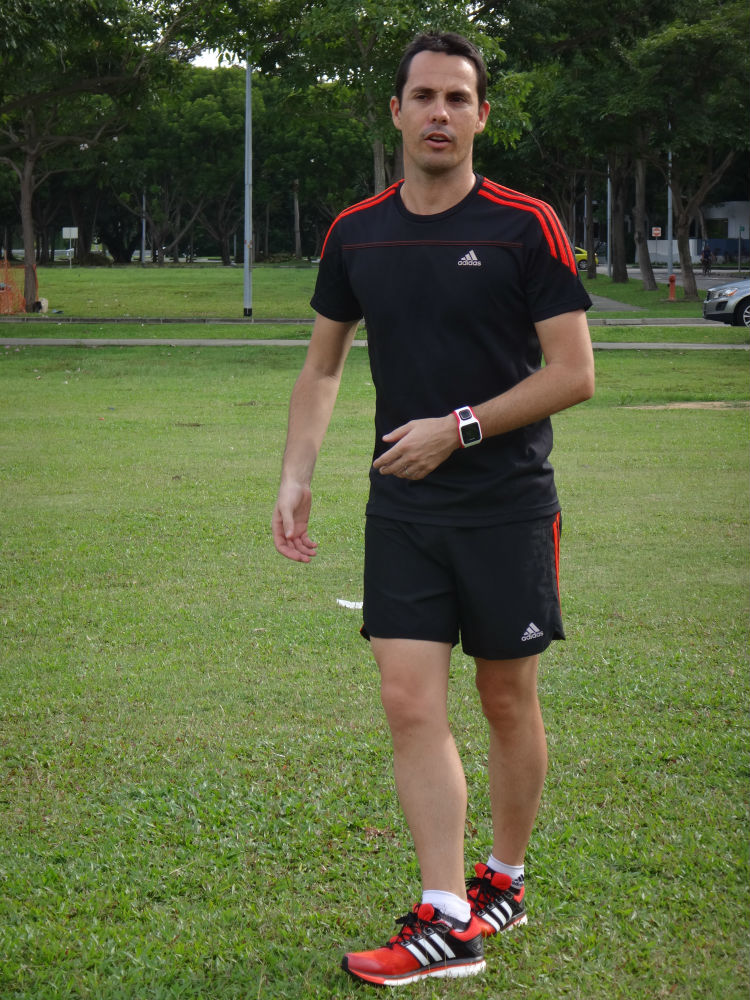New Zealander Ben Pulham began running at the age of six years old and first represented New Zealand in the triathlon at the age of 17. He was a professional triathlete during the 2000’s, taking part in competitions such as the ITU world cup circuit. HIs last professional race for New Zealand, was the Olympic Trials in Beijing in 2008.
Today, Pulham is retired from the competitive sports scene and now lives in Singapore. As the co-founder of Journey Fitness Company, he is dedicated to helping thousands of runners and triathletes with their own training, to improve their performances.
Ben Pulham has agreed to share with us, some tips on marathon training below.
Tips on Marathon Training: By Ben Pulham
Tip 1: Have a plan
If your goal is to improve your running performance, lose weight or qualify for Boston for example, it is a good idea to have a plan. A structured training programme will ensure a progressive approach that will build your fitness while lowering your chances of injury, illness and burnout. On top of that it will ensure that you are doing the right training at the right time and therefore maximizing every session that you complete. You wouldn’t build a house without a plan and preparing for a marathon should be no different.
Tip 2: Focus on aerobic speed, not anaerobic speed
Most of the runners that I speak with, think that they are limited by their speed but they’re not. They’re limited by their ability to maintain a speed. When we run a marathon, 99+ percent of our energy is coming from our aerobic system yet many runners are spending time fussing and trying to improve their anaerobic function – their speed. Instead, spend time developing your aerobic function by doing low intensity runs over a hilly course. This will improve a number of physiological processes that will allow you to maintain your speed such as burning fat, clearing lactate and efficiently delivering oxygen to the muscles.
Tip 3: Teach your body to use fat for fuel
When you improve your natural ability to burn fat, you conserve your precious carbohydrate stores. This will then allow you to maintain a higher pace for a longer time without hitting the wall. This is a must for marathon runners. Anyone can train this ability by eating a diet low in processed carbohydrate, running easy runs on an empty stomach and by training at the correct intensities across a training program.
Tip 4: Train by time and heart rate
Despite what you may have read in Runners World magazine, there are no magic training sessions or gear that you can employ to speed your chances of success. Success comes to those who put in the work and are able to consistently train for months, if not years on end without illness, injury or burnout.
If you’re like most runners, you are probably limiting your ability to be consistent and increasing your chances of illness and injury by training your distance and pace. Distance and pace are both outputs that do not factor in things such as terrain, conditions and how you feel.
Instead of using distance and pace to lead your training, try training by time and heart rate. Time and heart rate adapt to how you feel, what the weather is like and the running course you do e.g. flat roads, trails, uphill terrain, etc. As a result, you will never work harder than you need to and over time, you can consistently back up your training.
Tip 5: Recovery is key

Taking the time to recover is important. Otherwise you may suffer from burnout.
Photo: www.healthgauge.com
Most runners are under the impression that training is what makes you better. While this is somewhat true, it’s also somewhat false. The process of training is actually very hard on the body and breaks it down, which if done too often leads to injury, illness and burnout. It is only when we adequately recover from our training that we begin to see the benefits of our “work”.
To maximise recovery, get plenty of sleep (we need seven to nine hours a night), eat within 30 minutes of training, use a foam roller and train by time and heart rate.
Tip 6: Learn to execute a smart race
As a coach, I see many athletes whose race results do not match their fitness. That is, the race timings that they are achieving are not as good as they should be, given their current fitness. These athletes typically get themselves fit and then let themselves down on race day by executing a poor race. Racing is a skill that takes practice, patience and control and until you learn to race smart, you’re never going to race to your full potential.
The number one mistake runners make in racing is starting too fast. When we start too fast, we burn through our fuel stores at a higher rate and place more stress on the muscles. These two factors will hinder our performance later on in the race, as our pace slows considerably as a result.
Try a more conservative approach in your next race where you build your effort across the entire course. Your last km should be as fast or faster than your first.
Bonus Tip 7: Sign up for Journey Fitness Coach
Journey Fitness Coach is a new kind of coaching for runners and triathletes. Launching soon, Journey Fitness Coach will provide athletes of all abilities access to world class training programmes and coaching support while connecting you with a team of online training buddies to share experiences, knowledge and support.
Journey Fitness Coach comes with a free 14 day trial and blog readers here, will be offered a special discount code if you choose to sign up. Stay tuned to this blog for more details coming soon.
If you want to get in touch with Pulham now, please email him at hello@journeyfitnesscoach.com


Hi Ben,
A great article. Thanks.
I have a couple of questions.
1. When you say ‘focus on aerobic speed’, not ‘anaerobic speed’, you seem to be saying that long ‘low intensity’ runs are more valuable than interval training. But if you do long slow runs, aren’t you training yourself to run slowly? Doesn’t interval training help make your muscles more efficient at processing oxygen etc? I’m really curious about this.
2. Training by time and heart rate is an interesting idea. My garmin doesn’t include heart rate info, so I’d need to get a new watch before being able to figure out the heart rate approach. But do you basically advocate monitoring how long you are running for rather than monitoring how far or fast you are running. It is strangely counterintuitive.
Thanks for the article again.
cheers
Malcolm
HI Malcolm
I’m glad to hear you enjoyed the tips. I have answered your questions below. I hope they help to clarify things for you.
1. There is a time and place for both but since a marathon is 99% aerobic, it makes sense to primarily train this ability. When you do a lot of aerobic running, you improve your ability to burn fat (crucial for long distance racing because you conserve your precious carb stores), improve your ability to clear lactate, improve your strength endurance and improve your ability to transport oxygen to the muscles. All of these things lead to you being able to holder a faster pace for a longer time.
It’s also important to note that low intensity running doesn’t necessarily mean slow running. As you train this ability and improve your aerobic function, you’ll be able to run faster and faster at the same HR or effort. I recently had the pleasure of running with Haile Gebrselassie and he was running at an easy effort at 3:10min per km while I was running very hard. I was anaerobic, he was aerobic. That pace had very little to do with “speed” for him.
2. You don’t need anything fancy to monitor HR – simply a unit that has a stopwatch, current HR and average HR. If you have one with pace, that’s even better because it gives you a good way to track your progress. If your pace at the same HR is going up over time, your training is working.
We use time because it is more forgiving then distance. If you run 10km up a hill, it will take you a lot longer and your body will work much harder than if you run 10km downhill. If you run for 60mins it doesn’t matter whether you’re going up or down, into a head wind or tailwind. You are on your feet getting a specific benefit for 60mins. It’s the accumulation of fatigue across time which is important.
Cheers,
Ben